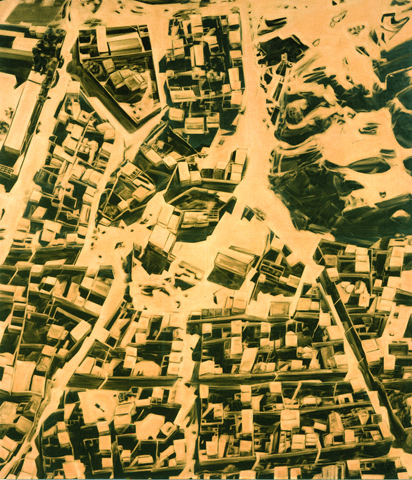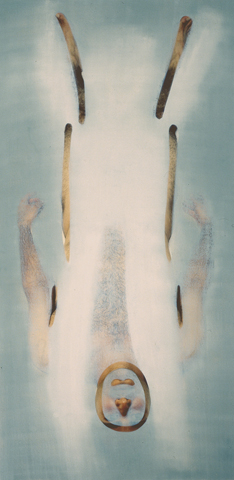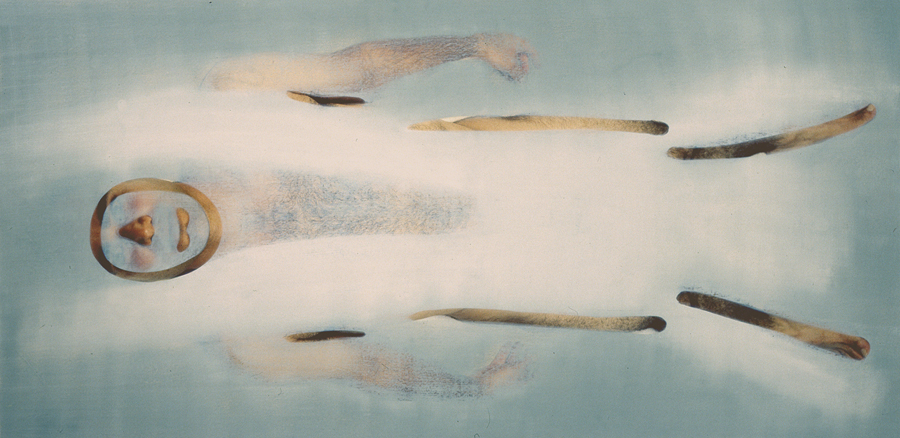





Shown at Museum Bochum
Bochum, Germany. 2003
Efrat’s work uses the visual materials and maps of archeology to examine the layering of the self’s identity as it relates both to the body and to place. Often using only colors found in his own body – in skin, eyes, veins – he paints in the maps of archeological sites, or interweaves such maps with photographs of himself.
To be myself Portrait is part of a series, where his body is shown lying down and photographed from above like an archeological site. The body appears paralyzed and locked into an immobile, rectangular form. In part realistic, in part abstract, the body is reminiscent of one wrapped in mourning cloth, or perhaps unwrapped by time.
What we meet in this partial burial, however, is not decay but its opposite: the burial of the visible body, and the partial release of pure light and basic forms.